North Rhine-Westphalia
North Rhine-Westphalia (German Nordrhein-Westfalen) is the most populous state in Germany, with 17.5 million inhabitants, located in the west of the country. It consists of two historically independent parts - Nordrhein, the urbanized area across the river Rhine in the southwest, and Westfalen in the northeast, which is quite diverse as it includes both the heavy industrialized and densely populated Ruhr Valley and the very green Teutoburg Forest.
The region contains several of the most-often visited cities of Germany, both for business and pleasure. Here you can find numerous headquarters of Germany's large and mid-sized corporations, European outposts of Asian and American multinationals, as well as world-renowned factories. Many of the globally important trade fairs take place in Düsseldorf and Cologne, the latter is also a major cultural centre. The beautiful historic city of Bonn was West Germany's de facto capital until 1990 and still contains many federal institutions, both governmental and cultural.
With the large population accumulated within a small area, as well as equally sizeable tourist traffic, North Rhine-Westphalia possesses the appropriate transportation infrastructure, with three major international airports and a very efficient - if sometimes overcrowded - railway and motorway network. NRW as it is frequently abbreviated, also contains the first "cycle highway" of Germany which is planned to grow to over 100 km of fully grade separated extra broad cycle route. Accommodation and gastronomic opportunities are aplenty as well. There is always a lot going on and getting between destinations is easy and quick.
Regions
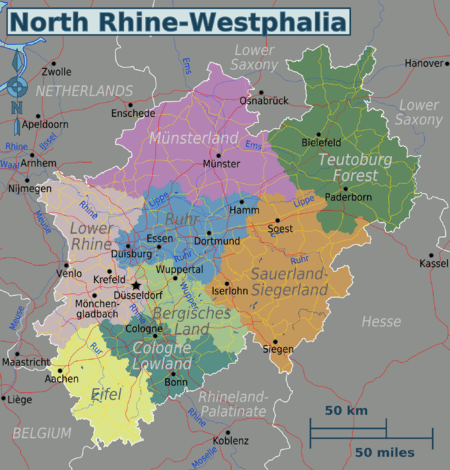
| Bergisches Land Low mountainous region with lush green woods, rivers and grasslands; long-standing manufacturing cities. |
| Cologne Lowland Multifaceted cultural landscape on the River Rhine, several lively cities with millenium-old histories. |
| Eifel (North Rhine-Westphalia) Low mountain range with quaint river valleys and romantic small towns. |
| Lower Rhine Prosperous cities steeped in history and rural plains close to the Dutch border. |
| Münsterland Agricultural-dominated lowland with more than a hundred castles, palaces and manors; heartland of horse breeding, equestrianism and cycling. |
| Ruhr Germany's biggest urban agglomeration; formerly dominated by coal mining and heavy industry, now reinventing itself as a cultural metropolis with surprisingly green leisure areas. |
| South Westphalia Siegerland and Sauerland—rolling hills and low mountain ranges, one of Germany's northernmost skiing destinations, forest and lakes for hiking, cycling and camping. |
| Teutoburg Forest East Westphalia and Lippe—mix of lowlands and wooded rolling hills; presumptive site of a legendary fight between Romans and Teutons; historic towns, castles, monasteries and cathedrals. |
Cities
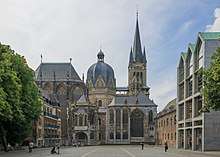
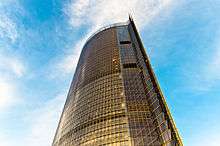
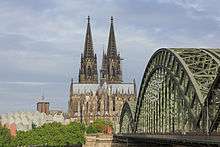
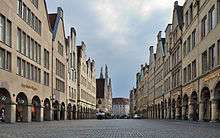
- 🌍 Düsseldorf. — the state capital on the Rhine, known as the media and professional services hub
- 🌍 Aachen. — Capital of the Holy Roman Empire since the 8th century, under a Charlemagne
- 🌍 Bonn. — seat of government and de facto capital of West Germany 1949-1990/98 the "Bundesstadt" still has many federal and international institutions remaining and big city trappings you wouldn't expect from "a small city in Germany"
- 🌍 Cologne. (Köln) — the fourth largest city in Germany is famous for its cathedral and location by the Rhine
- 🌍 Dortmund. – biggest city of the Ruhr district, home of frequent Bundesliga champion Borussia Dortmund and transforming industrial centre
- 🌍 Duisburg. — the world's biggest inland harbour, spectactular at night
- 🌍 Essen. – centre of the Ruhr agglomeration, transforming from an industrial site into a cultural metropolis (European Capital of Culture of 2010)
- 🌍 Münster. — a historic city with a particularly bike-friendly infrastructure and population
- 🌍 Wuppertal. — with the vintage suspended monorail (Schwebebahn) over the river Wupper
Other destinations
The Middle Rhine Valley is traditionally considered to end in Bonn, although the demarcation is anything but dramatic. You may want to continue to explore the valley upstream to Rhineland-Palatinate when in North Rhine-Westphalia.
Understand
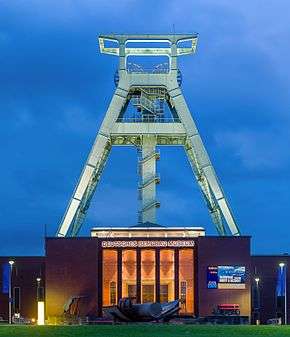
North Rhine-Westphalia (often abbreviated to NRW) is a German state founded after World War II by British occupation authorities. The state capital is Dusseldorf while Cologne is the most populous city. It consists of, as the name indicates, the province Westphalia in the east and the northern Rhinelands in the west. The hyphen symbolizes the attempt to bind people and regions that are so very different and stands also for the gap between the ethnic groups. This gap runs from the southeast to the northwest for 283 km across the state.
While the Rhineland is famous for its carnival and the "Rheinische Frohnatur" is a cliché throughout Germany, the Westphalians are said to be much more reserved and introverted. All over the state, but especially in its former industrial heart, migration has played a major role since at least the 19th century. Last names give an indication where much of the labor force came from when coal and steal built a nation and the stars of Schalke 04 during its glory days in the 1930s had names like Kuzorra or Szepan. Today the descendants of the earliest immigrants are hard to distinguish from people whose ancestors lived here even earlier, but new migrations of Turks, Italians and Yugoslavs after the war have left their mark on certain neighborhoods – not least in the ubiquitous (and delicious) Döner and Pizza restaurants.
The geography is also varied from the Cologne "bight" (Kölner Bucht) that represents the southernmost reaches of the North German Lowlands to the moderately high mountain ranges that surround it, like the Eifel or the Sauerland. In general the north is flatter than the south and the west is more urbanized than the east.
In the middle of all aspects, geographic and ethnic, lies the Ruhr Area (Ruhrgebiet), the name of the river at whose banks the region is situated. It arose during the past 150 years by immigrants from all over Europe but has strong roots in Westphalia and the Rhinelands as well. The region was and still is the heart of heavy industry in Germany, based on coal and steel. Although mining has mostly come to an end, the people strongly derive their identity from heavy industry. And there are still some successful manufacturers of specialist steel or products made from it. Car manufacturers like Opel in Bochum were once thought of as the replacement for heavy industries, but they are in the news more for threatened closures and layoffs than anything else. In the 21st century and especially with Essen pars pro toto for the Ruhr area being named European Capital of culture in 2010 gave a boost to the cultural scene in the region and put it on the map for something other than "rust belt" doom and gloom and helped right many inaccurate stereotypes about the region.
North Rhine-Westphalia has about 18 million inhabitants, which makes it the most populous state in Germany and the fourth largest in area. The Ruhr is the third or fourth largest urban region in the European Union, after London and Paris and either ahead or behind Madrid. Also, 34 of the 100 largest companies in Germany and 9 of the 100 largest European companies have their headquarter in North Rhine-Westphalia.
Talk
In most large cities the regular Hochdeutsch is spoken everyday, due to the communities there being mixtures of locals and immigrants from all parts of Germany, Europe and the world. The local dialects are mostly present in the form of unique vocabulary, otherwise you should find local German easy to understand (if you know any, that is).
In larger cities, English can be spoken by those performing service jobs, and chances are any person you encounter will speak at least basic English too. Do note, however, that this is not a rule and you may still encounter people, mostly seniors, who do not speak communicative English. In fact, English proficiency in the region is quite low compared to other regions despite the presence of economic centers like Düsseldorf and Cologne.
Get in
By plane
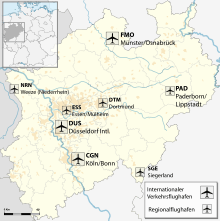
The major airports within North Rhine-Westphalia are:
- 🌍 Düsseldorf Airport (DUS IATA). one of Germany's largest airports, with intercontinental flights, as well as connections to all major European cities and aviation hubs
- 🌍 Cologne-Bonn Airport ( CGN IATA). just an hour away from the former, very well connected to the rest of Germany, as well as Europe, with flights to even smaller airports across the continent
- 🌍 Dortmund Airport (DTM IATA). mostly used by low-fare carriers who want to pay lower fees than at the other two airports -
- 🌍 Weeze Airport (NRN IATA). Another popular option for low-fare lovers, it is however rather far from the main population centers.
Additionally, both Bonn, Cologne and Düsseldorf, as well as many other cities in the region, can be reached by a direct high-speed train from Frankfurt Airport.
By train
Several ICE high speed lines go through the state, among them the Frankfurt Cologne mainline with speeds reaching 300 km/h. Regional trains are sometimes cheaper and often take more "scenic" routes that are too curvy for high speed trains. In the immediate border area with Belgium and the Netherlands (the Euregio) special discount tickets for local trains apply making day trips across the border very affordable indeed.
By bus
see also: Intercity buses in Germany
There are a number of inner-German as well as international bus lines with stops in most major cities of the state. As the domestic market only became deregulated in 2012, there is still a lot of change and routes may appear and disappear on relatively short notice.
By car
As this is the most densely populated state of Germany, numerous long distance Autobahnen run through this state and across the border. Due in part to the high population density, they are however also prone to congestion, especially at the first and last weekend of major holidays or during rush hour.
Get around
Public transport is very good with a high density. You need only one ticket for local, regional train RB and regional express trains RE (no high-speed trains, though their top speed is usually 160km/h [~100mph]), light rail systems S-Bahn, metro (U-Bahn/Stadtbahn), trams/streetcars (Straßenbahn) and buses in the whole North Rhine-Westphalia. You don't need to purchase another ticket when you change from local train to bus, light rail and tram.
Example: You purchased a ticket from Aachen to Wuppertal for local, regional and express trains. With this ticket, you can use the monorail (Schwebebahn) and the city buses in Wuppertal.
See

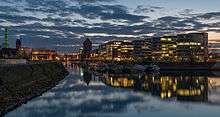
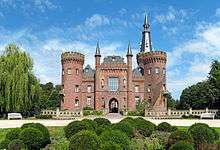
There is plenty to see and explore in the NRW. The most obvious recommendations are the large cities, with both rich history and bustling contemporary life, full of events, including the famous Carnival of Cologne. But if you want to escape from the hustle and bustle, the Eifel mountains in the southeast are a very different environment, peaceful, quiet and full of great sights. Aachen Cathedral with parts of the building dating back to the 800s is well worth a visit. For more modern history check out the German Mining Museum in Bochum.
Do
The abundance of rivers provides for plentiful river cruising opportunities. Many locals own boats and, as the Rhine is also connected naturally and via canals to many other major rivers and bodies of water, enjoy travelling around Europe's waterways at their whim.
North Rhine-Westphalia is also home to many sports clubs. Borussia Dortmund soccer club has been particularly successful in the 2010s.
Eat
There is no particular North Rhine or Westphalian cuisine, but this doesn't mean you are not in for some culinary delights. Due to the abundance of ethnic minorities, there is a variety ethnic restaurants of all shapes and sizes - from the local Döner Kebab stand to exquisity fine dining establishments. Of note is the fact that Düsseldorf has a sizeable Japanese population (1% of the city), which is there mostly due to Japanese companies having their European headquarters there. Therefore, you will find quite a few higher-end Japanese restaurants in the city.
Drink
Beer is the drink of choice in the region, with every city being proud of local breweries and the unique kinds and brands of beer that they make - like the Kölsch in Cologne. Head over to the local Bierkeller and mingle with the locals if you speak some German (or just enjoy the atmosphere and people-watch, if you don't). In larger cities you will also find other kinds of busy nightlife, with nightclubs catering to various cultural groups and music tastes.
Sleep
As the area is densely urban and well-travelled by both business and leisure travellers, the accommodation base is plentiful and offers a wide choice, from exquisite boutique hotels in historic monuments, through efficient and comfortable business-oriented hotels down to small and cozy (and inexpensive) local Pensions.
Go next
- Lower Saxony forms a geographic continuum with Westphalia, and offers all kinds of attractions, both natural, historic and modern.
- Rheinland-Pfalz and Hesse are farther up the river Rhine, and you can get there by all means of transportation, including boats. Apart from beautiful natural landscapes and world-famous wineries, you can also visit another major German city, Frankfurt, which has frequent and fast railway connections with Düsseldorf, Cologne and Bonn.
- Netherlands and Belgium border North-Rhine Westphalia, and there are many transportation options to get there, even for a day trip